Rainbow Lorikeet
General Information
Rainbow lorikeets (Trichoglossus haematodus moluccanus) are colourful birds native to Australia, particularly the northern and eastern coasts. They can often be seen in large flocks near eucalyptus trees, in the dawn and dusk hours of the day.
While they look very similar, males and females act differently. In an attempt to attract females during mating season, male rainbow lorikeets can be seen bobbing and prancing around or even hanging upside down on branches.
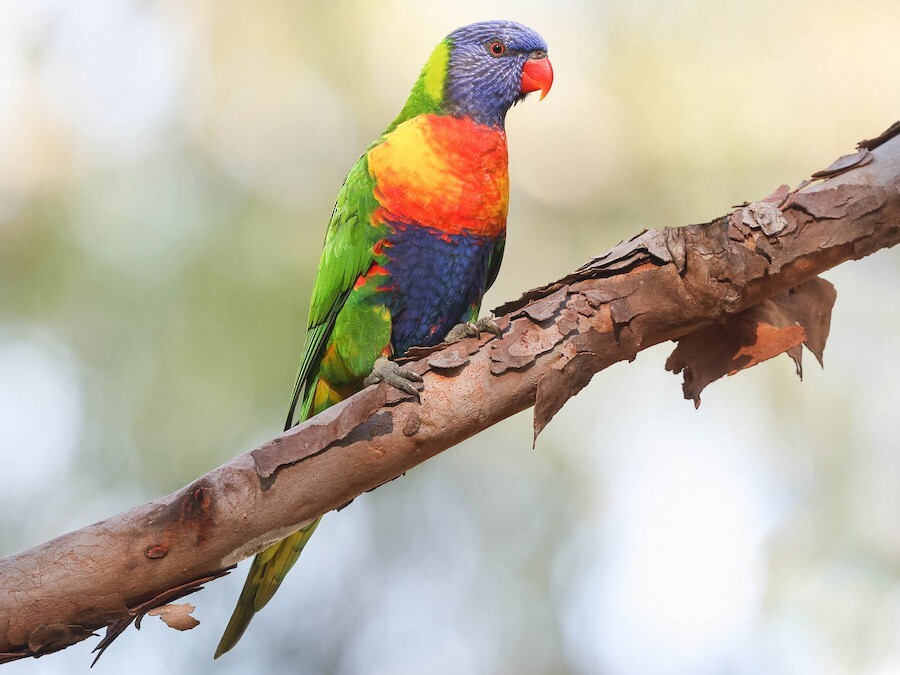
Appearance
Rainbow lorikeets are brightly coloured birds with a distinct blue head, orange/yellow breast, and adorned with green wings. Both sexes look the same, and younger rainbow lorikeets usually have a duller appearance. Adults can be as large as 30cm in length.
Lifespan
Up to 30 years.
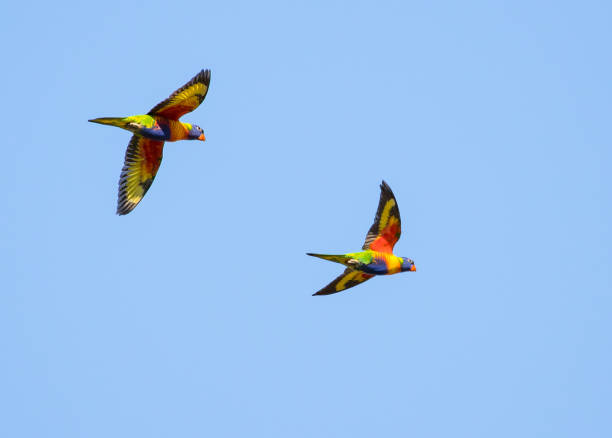
Diet
Rainbow lorikeets mainly look for flowers on trees or shrubs in order to harvest the nectar and pollen. They also eat a variety of fruits and some insects.
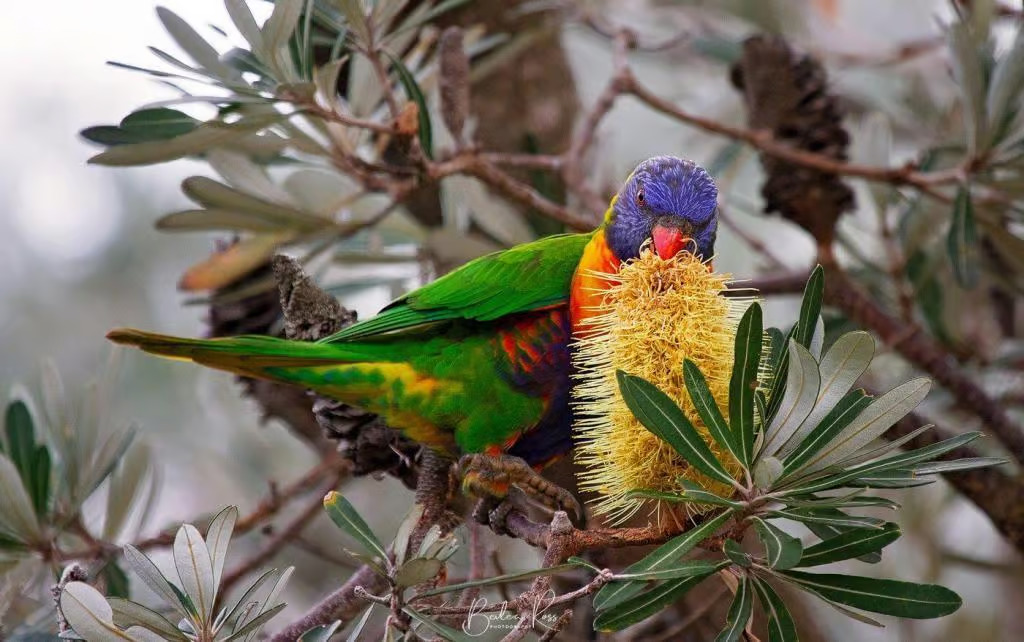
Habitat
You can find them in a variety of habitats, including urban tree areas, woodlands, or rainforests.
Located
Located around the coasts and slightly inland of Australia.
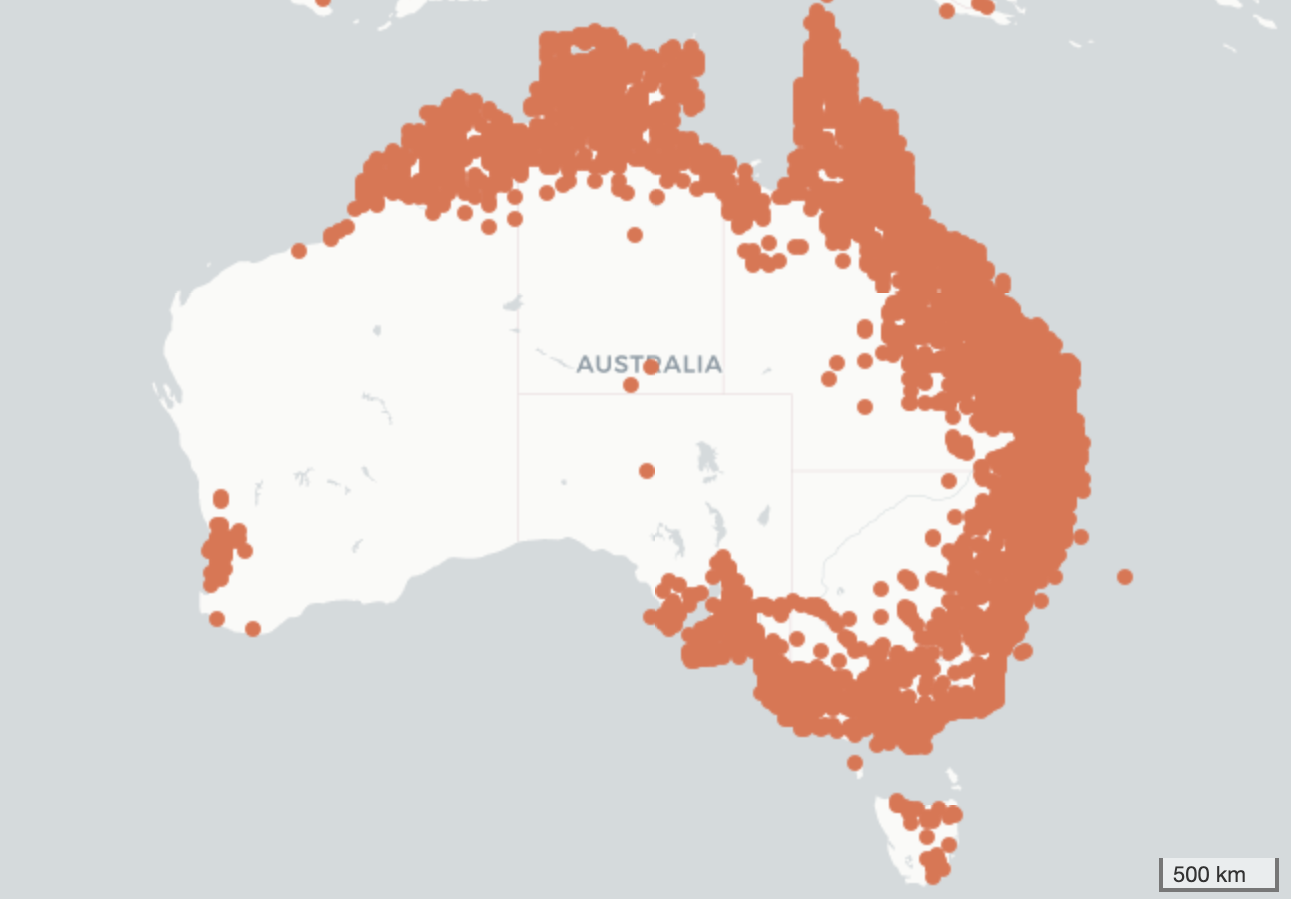
Threats
Rainbow lorikeets face a number of dangers including; habitat loss (from forest/tree clearing), diseases and human feeding (unnatural diets that can lead to sickness or death).
Psittacine Beak and Feather Disease (PBFD) is very common in lorikeets, and is something all parrots are prone to. It is caused by a virus that results in feather and beak abnormalities, and its effects can indirectly lead to infections, starvation, and trauma for the bird.
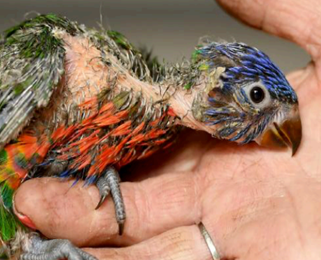
Capture/Release of Rainbow Lorikeets
When the rainbow lorikeet is ready for release, it is best to try and release it in the same or close area to where it was found as this can help increase chances of survival.
What to do if you find an injured bird...
As the bird could be distressed or anxious, be careful around its beak and claws. Hold the bird using an old towel/blanket, and try not to give it anything to feed or drink until it is in proper care, in order to avoid a worsened condition.
Make note of where you found the bird, and contact a local vet or wildlife shelter for further assistance. Alternatively, if you are not aware of your local shelter, you can contact Wildlife Victoria (Ph 8400 7300) for assistance.
Find more information here




